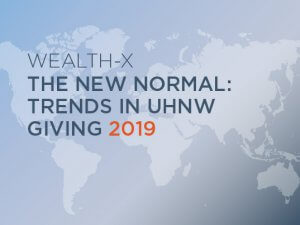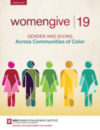What is this Report?

Religion still remains the number one category of giving in the US, however it has been declining in recent years. Most studies have focused on individual givers but the institutions themselves have not been studied. This report tries to correct this gap with a study of how congregations work. The report looks at how they handle their finances as well as where they receive their funding.
Congregations varied from 10 to 35K people with revenues ranging from $3K to $41M. They used a sample size of 1,231 congregations.
What are Key Findings of this Report?
- Most of congregation funding comes from individuals (81% on average). 40% get about all of their revenue from individuals. That’s higher when considering that 68% of total contributions come from individuals in the US (though the number does not include gifts from family foundations or corporate gifts from a person’s company). Other revenue streams include 2% from government grants and 12% from non-government grants.
- The 78% of gifts from individuals are given during services. Of congregations studied, 92% “pass the plate” and 26% have a special offering box in their space. And 50% of congregations receive gifts digitally during service such as a mobile device app, text-to-give, or a special kiosk. Researchers found that there was a positive relationship between congregations with digital technologies and fundraising growth in revenue and size, but further research needs to be done.
- 55% of congregations have a recurring contributions option for their congregants. However, 15% of those congregations do not receive recurring gifts.
- 64% of congregations have specifically asked for a pledge of a specific amount, but few regularly teach about giving. 36% teach on the topic quarterly and 35% annually. The researchers note: “Giving is often ritualized or routinized within congregations although it is rarely addressed explicitly.” However, researchers note that congregations tend to lag behind nonprofit counterparts in acknowledging and thanking their donors.
- 57% of congregations offer opportunities for their congregants to support other nonprofits, locally, nationally, and internationally. Congregations contributed an average of $25,142 for mission-related causes. On average, congregations spend 19% of their mission resources internationally. Evangelical congregations spent more compared to other denominations. Many congregations spent more on physical needs than spiritual needs, except for Other denominations which was split between the two categories. The report notes: “These numbers demonstrate that while congregations are classified by tax laws as having a primary religious purpose – providing religious education and services, congregations are engaged in extensive mission activities both locally and around the world.”
What Can I Do as a Result?
- Improve the process of giving. While Giving USA has reported a decline in religious giving over the past several decades, researchers found that although indicators suggest congregations are declining, “overall more congregations in the United States are growing than declining.” Instead, their report shows there is a lot of opportunity for congregations to improve their giving processes.
- Evaluate stewardship practices. Congregations have room for growth in their fundraising revenues. Congregants have been giving to congregations without direct prompting, aside from passing the plate in services. For example, thanking donors in a timely manner can better engage their donors and potentially keep them.
- Consider asking for gifts directly as well as providing multiple ways to give. Some congregations already have different digital options to give but other congregations may want to consider investigating digital options.
- Communicate the impact of giving. While the majority of congregations have the option for recurring donations, they should make it clear why those donations can be so powerful. A 2016 study found that donor retention from monthly giving is 90% compared to the average of 46%.
Additional Resources
- The National Study of Congregations’ Economic Practices l Lake Institute on Faith & Giving Indiana University Lilly Family School of Philanthropy 2019
- Giving USA Summary 2019 l Giving USA
- The State of Donor Retention in One Image l Bloomerang 2016









